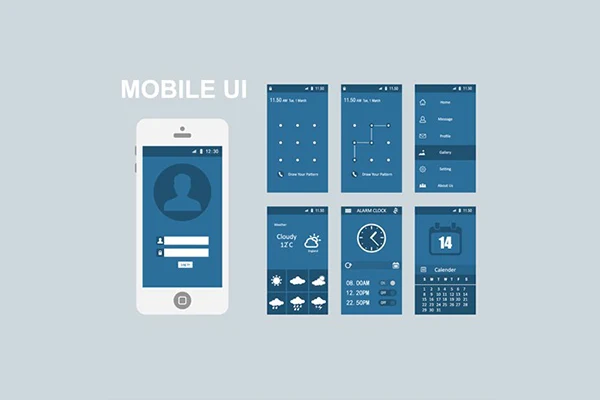The Importance of Appealing and Engaging UI Design for Websites, Software, and Apps
The law of attraction to any person or object always starts with visual stimulation. With an object, both design and functionality play a crucial role. The play of colors, placement of text, font, and style are critical elements to make web and software applications attract the audience, resonate with them and generate brand awareness. The site needs to be eye-catching, user-friendly, and simple. The entire consumer experience that leads to product comprehension and purchase is called the “User Experience” or UX.
Understanding consumer psychology plays an important part in creating UX for a website, software or application. The creator needs to know how designs are perceived so that tweaks can be made to generate traffic or create effective apps. Here are some UX design principles that influence a user on a website, making it “user-friendly.”
UX Design Principles
1. Von Restorff Effect:
Have you noticed how you gravitate towards a design, color or object that stands out and holds its own when placed alongside a row of similar colors, designs or objects? That is the isolated effect, or the Von Restorff Effect. This is the reason why call-to-actions (CTAs) look so different from the other buttons on a website or application. The differentiating colors, font or style helps it to stand out and catch the eye of the consumer and recall later.
2. Serial Position Effect:
Where do you go to navigate on a website? Do your eyes automatically search from the top corner of the menu or the bottom corner? You will notice how iOS applications put the “home” and “profile” items up on the top left or top right. That is the Serial Position Effect.
3. Cognitive Load:
The amount of thinking and brainstorming that goes into a creative result is the cognitive load. Simply put, it’s the memory load needed to implement a task. There are three kinds of Cognitive Loads:
Intrinsic Cognitive Load:
This load weighs the difficulty in understanding instructions in a topic. This is why micro-copy and copy have an important role to play in good user experience. Short, simple text works best to allow the user to follow instruction.
Germane Cognitive Load:
This is the load that goes into processing information and construction of “schemas” (i.e. patterns of thought that organizes information into related categories). If readers are familiar with a pattern, they can recognize them easily elsewhere and follow faster using the same format.
Extraneous Cognitive Load:
This is the negative effect of not learning properly.

4. Hick’s Law:
Hick’s Law is about the time taken for a user to make an informed decision based on the choices presented. If they are categorized in simple terms, for example, the user is able to understand better and take an instant decision. If the text is unclear or complex, a decision takes more time or the user remains undecided. That is Hick’s Law coming into play.
5. Law of Proximity:
This states that objects that are grouped together are associated with the brain into one category. Similarly, when objects are placed farther away, the brain is unable to perceive the connection and assumes there isn’t any. This means that there is a need to create groups or clusters when designing a UI (User Interface). Caution needs to be taken while clubbing things together so that the user is not confused about making an informed choice.
Konverge: Toronto’s Leading Custom Software Developer
Konverge has been developing software and web application for over 20 years with intensive insights into consumer psychology and UX/UI design applications. Whether you are a small, medium or large enterprise in Toronto or around the globe, we can help you create tailored solutions and custom apps. Please call us for a free consultation!





